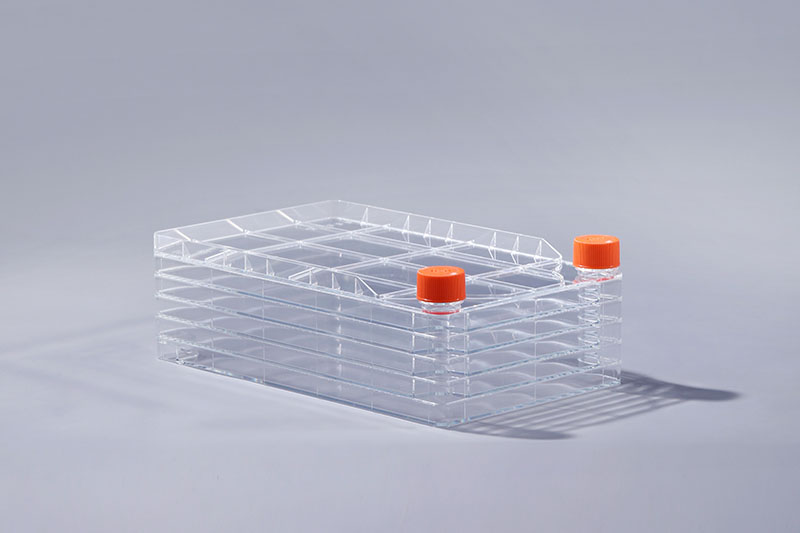Med den hurtige udvikling af den biofarmaceutiske industri er brugen af cellekulturteknologi til at udføre forskning i vacciner, monoklonale antistoffer og andre lægemidler blevet en trend. Siden 1. august 2018 er skoldkoppevaccinen blevet inkluderet i Shanghai Municipal Immunization Plan, og folks opmærksomhed på skoldkoppevaccinen er fortsat stigning, og det har et stort markedsvolumen. Forskellige praktiske erfaringer har også vist, at brugen af cellefabrikker til storskalaproduktion af skoldkoppevaccine sammenlignet med andre kulturforbrugsmaterialer har fordelene med mindre forurening, højt produktudbytte, lille batch-til-batch-variabilitet og kort driftstid . En vigtig celledyrkningsmetode for virksomheder. er almindeligt anvendte forbrugsvarer i storskala cellekultur, som spiller en vigtig rolle i storskalaproduktionen af skoldkopper-vacciner. zoster virus. De kliniske symptomer er feber, hovedsageligt makuler, papler, vesikler og sårskorper i partier, og endda død i alvorlige tilfælde. Skoldkoppevaccinen er den sikreste og mest effektive måde at forebygge skoldkopper på. Varicella-vaccinen adopterer den svækkede stamme af skoldkoppevirus OKa, som er almindeligt anvendt i verden, og er fremstillet af MRC-5 human diploid cellekultur. Udseendet af det frysetørrede produkt er en mælkehvid løs krop, og det er en bleggul væske efter opløsning. At få skoldkoppevaccinen beskytter ikke kun mod skoldkopper, men forhindrer også komplikationer fra skoldkopper helvedesild.
Desuden kan cellefabrikken også bruges til storskalaproduktion af MFR-vaccine, hepatitis A-vaccine, poliovaccine osv. Med den hurtige udvikling af biomedicinsk teknologi, anvendelsesområdet af dette forbrugsmateriale vil også blive bredere og bredere.
Since August 1, 2018, the varicella vaccine has been included in the Shanghai Municipal Immunization Plan, and people's attention to the varicella vaccine has continued to increase, and it has a large market volume. Various practical experiences have also proved that, compared with other culture consumables, the use of cell factories for large-scale production of varicella vaccine has the advantages of less pollution, high product yield, small batch-to-batch variability, and short operation time. An important cell culture method for enterprises.
In addition, the cell factory can also be used for large-scale production of MMR vaccine, hepatitis A vaccine, polio vaccine, etc. With the rapid development of biomedical technology, the application scope of this consumable will also become wider and wider.
The FAI climbed 5.9 percent year-on-year in the first 11 months of 2018, quickening from the 5.7-percent growth in Jan-Oct, the National Bureau of Statistics (NBS) said Friday in an online statement.
The key indicator of investment, dubbed a major growth driver, hit the bottom in August and has since started to rebound steadily.
In the face of emerging economic challenges home and abroad, China has stepped up efforts to stabilize investment, in particular rolling out measures to motivate private investors and channel funds into infrastructure.
Friday's data showed private investment, accounting for more than 60 percent of the total FAI, expanded by a brisk 8.7 percent.
NBS spokesperson Mao Shengyong said funds into weak economic links registered rapid increases as investment in environmental protection and agriculture jumped 42 percent and 12.5 percent respectively, much faster than the average.
In breakdown, investment in high-tech and equipment manufacturing remained vigorous with 16.1-percent and 11.6-percent increases respectively in the first 11 months. Infrastructure investment gained 3.7 percent, staying flat. Investment in property development rose 9.7 percent, also unchanged.
 English
English



















































